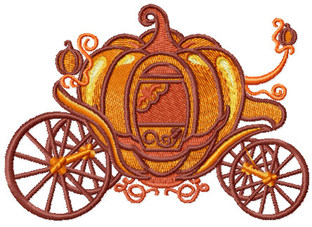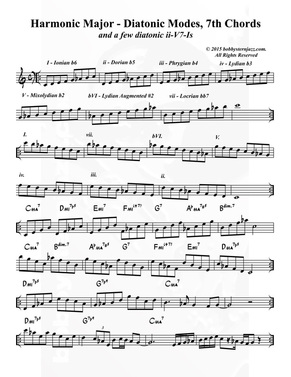Harmonic Major - Cinderella Scale Story?

Personally, I haven't paid much attention to this scale and its modes up to this point; the reason being, I guess, is that many of its diatonic chord types are embedded within some of the more commonly used scale systems: Major. minor (melodic & harmonic), diminished and augmented.
However, I've come to discover that the Harmonic Major scale system is a unique and beautiful thing (or should I say thang?)!
Although a hybrid, of sorts, it contains a number of strangely beautiful and exotic sounding (to western ears) modes and melodic possibilities.
So what, then, is this thing called Harmonic Major, and how did it get here?
In terms of C Maj, that would mean "A" becomes "Ab".
Harmonic Major can also be seen as a Maj tetrachord (C-D-E-F) coupled with a harmonic minor tetrachord (G-Ab-B-C) a whole tone apart.
An interesting observation here is one which parallels the formation of a Melodic Minor scale by flatting the 3rd degree of Major.
What I mean to say, for example, is that if we take an F Lydian mode (4th mode of C Major) and flat it's 3rd degree, (again "A" to "Ab") we create an aptly named Lydian b3 (F-G-Ab-B C-D-E-F).
As we know, the "Jewel in the Lotus" of Melodic Minor harmony is it's 7th mode, commonly referred to as the Altered Scale.
If we parallel that by viewing the 3rd mode of C Harmonic Major (E Phrygian b4 = E-F-G-Ab
B-C-D-E) as the "quasi 7th mode" of F Lydian b3, we can view it as a dominant scale which contains a difference of a single note (B rather than Bb) to the E7 altered scale.
E7 altered = E-F-G-Ab Bb-C-D-E (7th mode of Melodic Minor)
E Phrygian b4 = E-F-G-Ab B-C-D-E (3rd mode of Harmonic Major)
Even though the altered tone (b5) Bb becomes a natural 5 in the Harmonic Major mode, the Phrygian b4 still supplies us with 3 of the 4 possible dominant altered tones - F (b9) G (#9) & C (b13) for E7alt.
The E half /whole diminished scale also has 3 altered tones (F, G & Bb). The A Harmonic Minor scale has only 2: F & C (b13).
This means that the 3rd mode of the Harmonic Minor scale is more than a worthy alternative to the altered, diminished and harmonic minor scales in representing E7alt, most likely resolving to an "A" something. However, as a result of flatting the A, we now have 2 sets of tritones and a diminished 7th chord (Ab-B-D-F), which means that besides E7, we could use this scale to express G7, Db7 & Bb7 as well.
Speaking of G7, the dominant V7 chord diatonic to C Harmonic Major, the below downloadable PDF contains several examples of diatonic "in house" ii-V7-Is, made up exclusively of tonal material from C Harmonic Major.
Many things one might play in Major could be presented in Harmonic Major with a fresh perspective. The b6 sounds good against a straight C Maj7, giving the line a type of "delayed resolution".
It has also come to my attention that Harmonic Major has some interesting pentatonics and triad pairs. A few standouts are:
- Pentatonic b3 - F-G-Ab-C-D (omit scale steps 3 & 7) also found in Dorian & Melodic Minor
- Pentatonic b6 - C-D-E-G-Ab (omit scale steps 4 & 7), also found in Melodic Minor.
- Pentatonic b2 - G-Ab-B-D-E (omit scale steps 1 & 4), also found in the diminished scale.
- Pentatonic #2, b6 - E-G-Ab-B-C (omit scale steps 2 & 4), from scale degree 3. One note short (D#) of the 6 note Augmented Scale, and shares its quality.
- The triad pair of G Maj & F min is a strong, dominant sounding combination. Also native to Harmonic Minor.
- G Maj & Ab+ expresses a more tonic C Maj7#5 sound.
- E min & F min combines qualities of both of the above pairs.
As an added thought, three of the modes of Harmonic Major have equivalents among the 72 Carnatic Melakartas.
- Mode 1 - Ionian b6 = Melakarta 27 (Sarasangi)
- Mode 4 - Lydian b3 = Melakarta 59 (Dharmavati)
- Mode 5 - Mixolydian b2 = Melakarta 16 (Chakravakam)
More material and details on all this stuff will be the subject of future posts, so stay tuned.
Thanks for hanging whilst I attempted to rediscover the wheel!
Ooops! It's one minute before midnight. Gotta go!

 RSS Feed
RSS Feed









